Tips for visiting and photographing Stokksnes and Vestrahorn in Iceland
How to get where, where to stay, and what you need to know about photographing this iconic beach and mountain in southeastern Iceland.
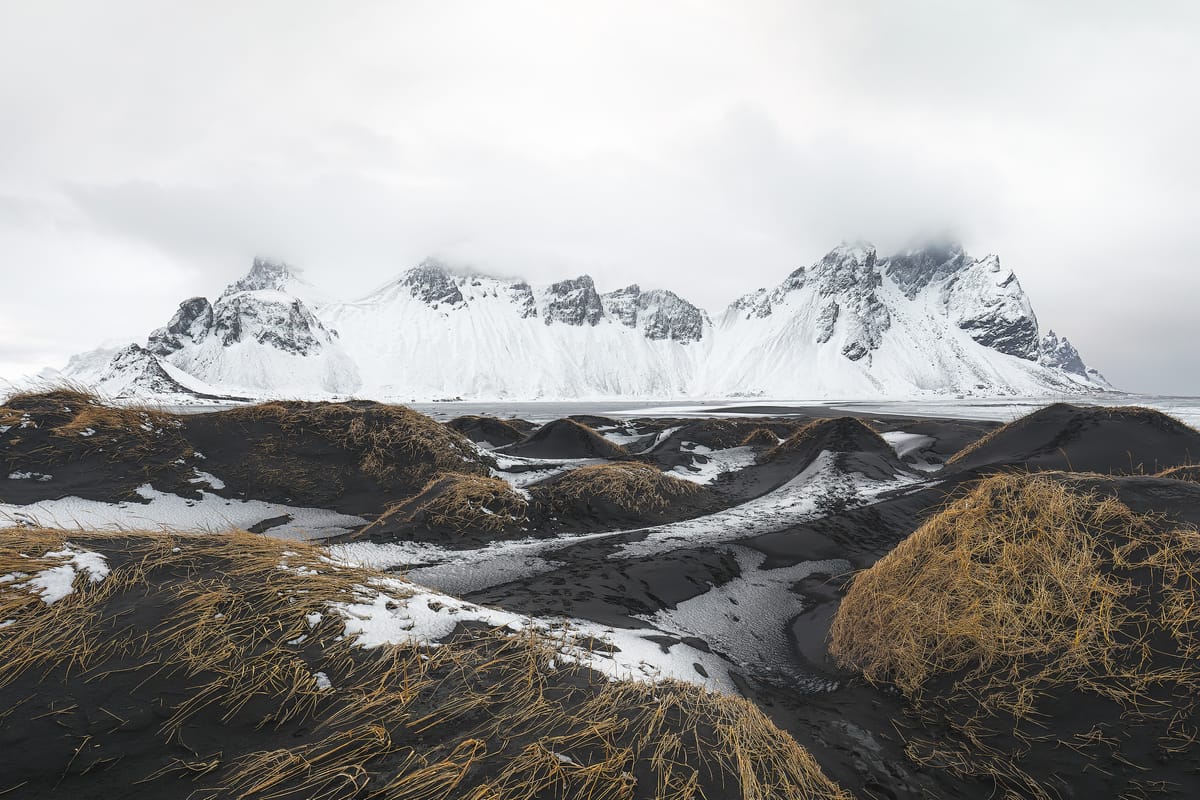
On the eastern side of Iceland, beyond where most tourists travel, you will find Stokksnes — a remarkable headland of black sand dunes by the sea. Vestrahorn, a dramatic and iconic mountain range, overlooks the dunes. I visited Stokksnes multiple times during a winter trip to Iceland and was blown away by its beauty and endless photographic opportunities.
If Stokksnes is on your Iceland photography wish list, here is how to get there, where to stay, and what to bring in your camera bag.
Getting to Stokksnes
Due to its geographical isolation from the rest of the country, visiting Stokksnes requires planning and at least one overnight stay if you intend to make the most of it. By car, it’s three-and-a-half-hours from Vik, and nearly six hours from Reykjavik. In other words, not the kind of place you can see on a quick day trip. But if you're planning a journey around the country, or have time to drive out and there and back, it's worth spending at least one night.
Where to stay nearby
Because Stokksnes is in a less developed region of Iceland, there are fewer accommodations to choose from. There are however three fantastic places to stay within a short 20-minute drive.
Hrafnavellir Guest House
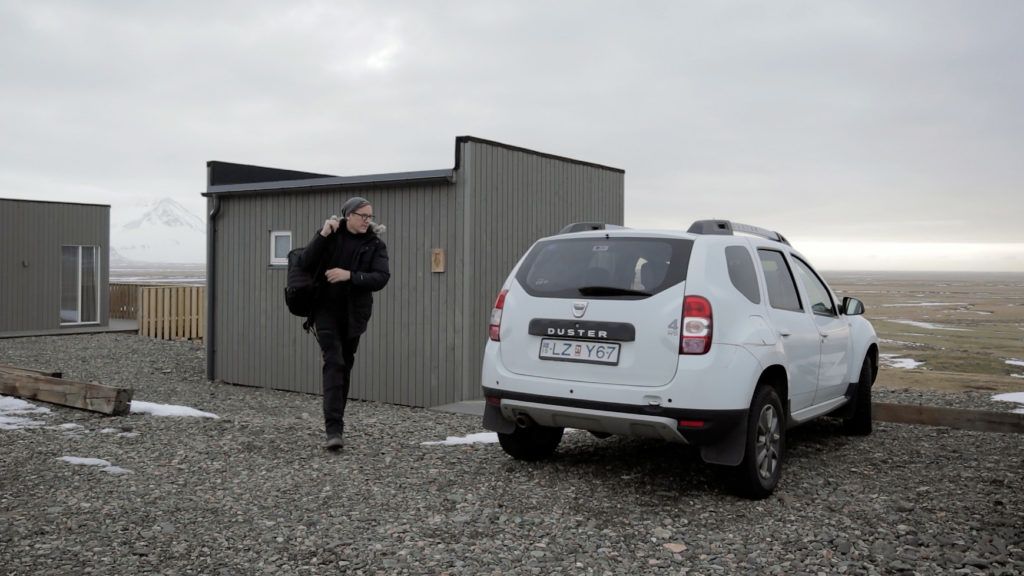
Private cabins resembling tiny homes owned and operated by a welcoming Icelandic family. Cabins are small but well-appointed with comfortable beds, small seating areas, plus private bathrooms. Each cabin is spaced apart (so neighbors shouldn't disrupt your sleep). A communal dining area in the center of the property offers free, self-serve breakfast each morning. The dining room is open throughout the day and night for guests to congregate.
I stayed at Hrafnavellir Guest House for three nights and found it to be the perfect respite at the end of a long day.
Árnanes Country Hotel
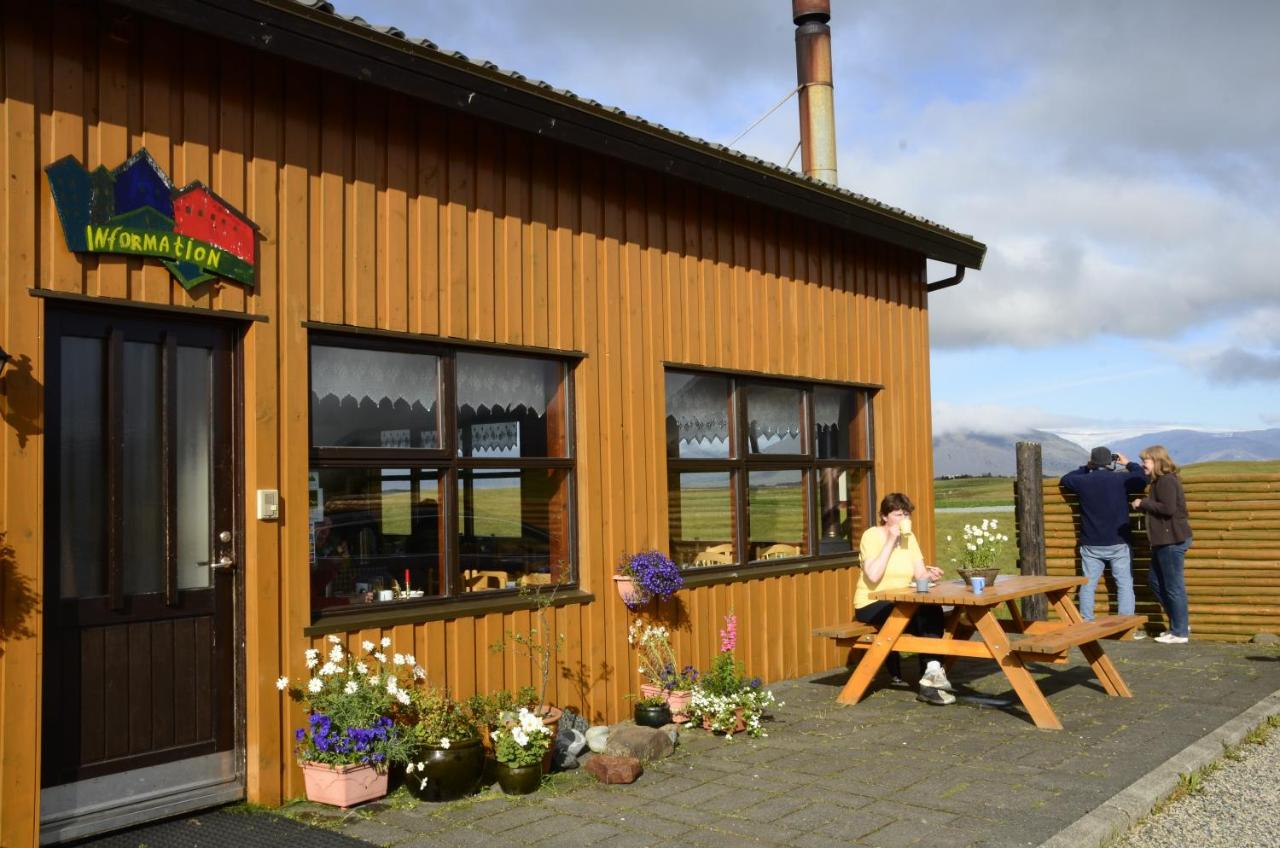
Charming wood-clad cottages on the side of road just outside of Hofn. Each cottage is private, with its own bathroom, and has the look and feel of a rustic ski chalet. Doors open directly to the parking area. Free, self-serve breakfast served each morning in a communal dining area at the end of the property. Simple, clean, and comfortable.
Milk Factory
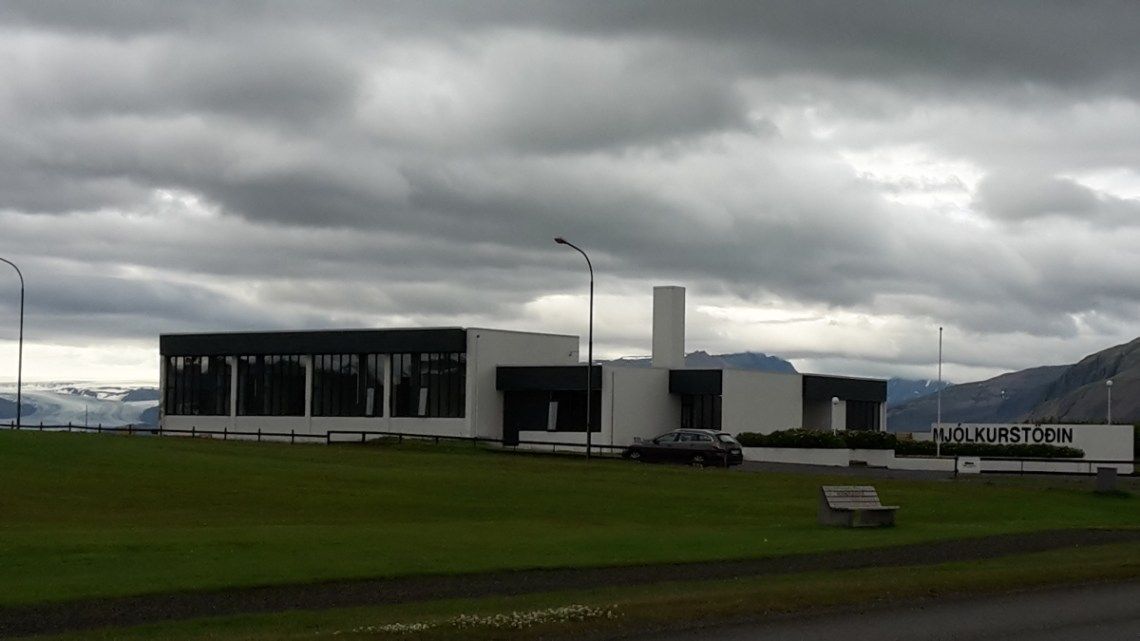
Formerly a local dairy, the Milk Factory is a modern, boutique-style hotel to the west of Stokksnes in the small town of Höfn. Private bathrooms, free buffet breakfast, and bicycles for guests to use when venturing into the small town. I haven’t stayed at the Milk Factory, but I visited the property and have heard positive things about it from others.
Entering Stokksnes
Unlike other natural areas in Iceland, Stokksnes is privately owned and requires a modest admission fee. Drive to the end of the road, and you'll see a small Viking Cafe coffee house at the end of the road (image below). Inside you purchase a ticket that is valid for 24 hours (mine was 900 ISK, or ~$6). Credit cards accepted, and they also offer coffee and small bites.
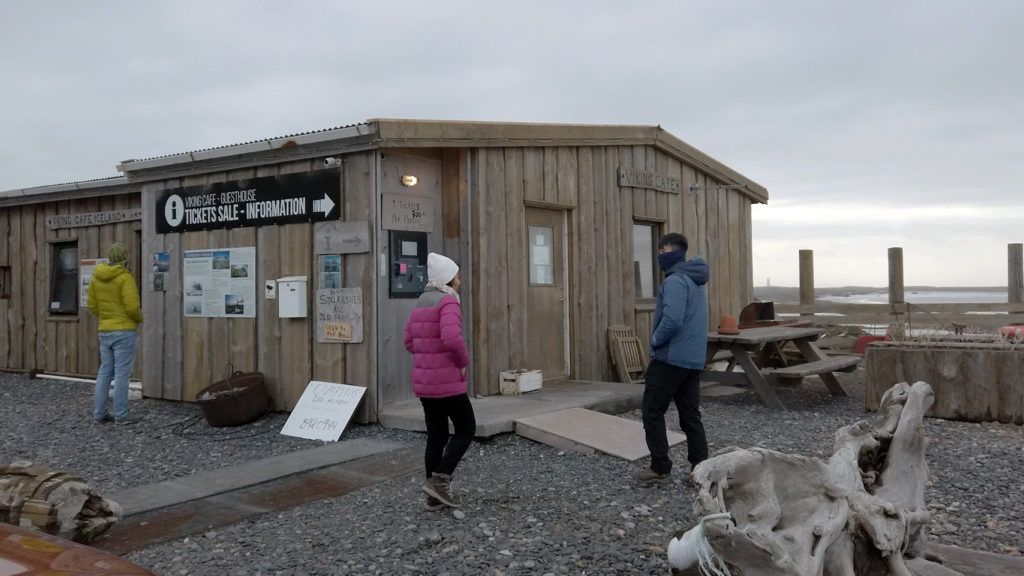
Drive to the nearby gate, scan your ticket, then drive down the (frequently photographed) straight gravel road towards a radar station currently used by the Iceland Air Defense System (which used to be an American military outpost during the cold war).
Along the left-hand side of the road will be a few areas to pull in and park your car. Park anywhere you want. Lace up your boots, grab your pack, and start hiking into the dunes. To your left will be the awe-inspiring mountain range known as Vestrahorn.
Photographing Stokksnes and Vestrahorn
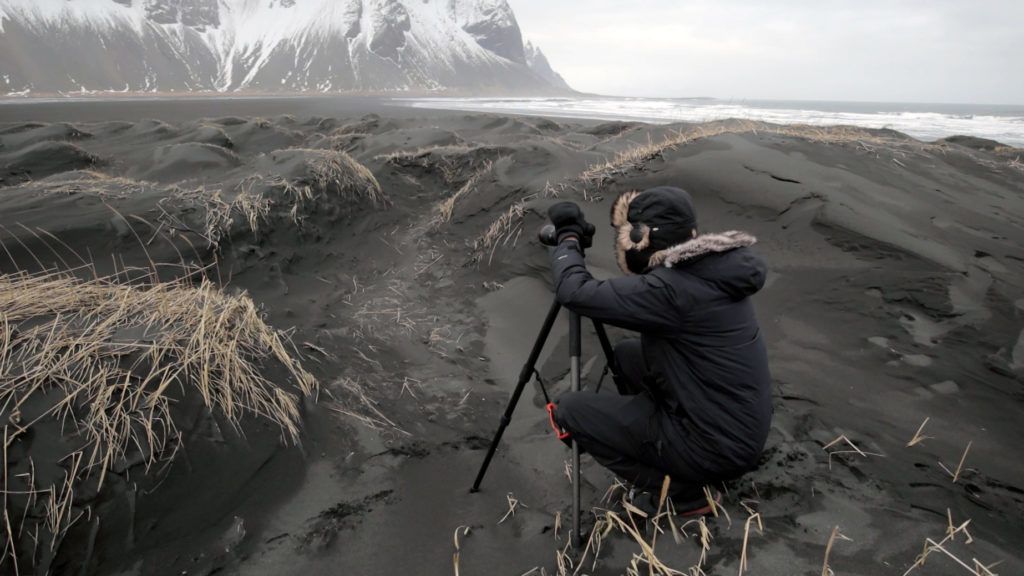
When packing gear for Stokksnes, treat it like you’re visiting a beach. The black sand is picked up by the wind and finds its way into everything—your shoes, backpack, and unfortunately, your camera gear as well.
While in the dunes, exercise caution when changing lenses, opening your backpack, and extending the legs of your tripod. Try and keep sand out by extending the first part of each leg, then keep them extended at all times (only collapse the upper legs when necessary). I forgot to follow this advice and paid the price by having to disassemble, wash, and reassemble my tripod afterwards. Not exactly something you want to do when traveling.
The view from the water, looking across the waves to the edge of Vestrahorn, is well photographed and works really well in a portrait orientation. If interested in capturing the entirety of Vestrahorn, try hiking further back in the dunes on either side of the road. Remember that a wide angle lens will make the mountains look smaller (and the dunes larger), so to avoid distortion you may want to shoot panoramas using a standard or semi-telephoto focal length (eg, 50mm, 70mm). Whatever you chose to do creatively, there are loads of photographic opportunties in this area.
Seasonal differences
Stokksnes looks completely different in summer and winter. When I was there in August, the black sand dunes were covered with bright, bushy green sea grass. In winter a couple years prior, the grass was more dispersed and had an orange / yellow hue. Temperature wise, it was quite cold both times, especially when the sun went down.
Of the two seasons, I prefer winter. More black sand is visible, and there are typically fewer footprints in the sand. I also prefer the color of the grass, photographically. Snow also provides a nice tonal contrast against the black sand.
Whenever you choose to visit, remember that the weather quickly changes on the coast. One hour it could be gray and overcast, the next bright and sunny.
Video
I've shot a couple of videos from Stokksnes for my YouTube channel. Both are embedded below.



